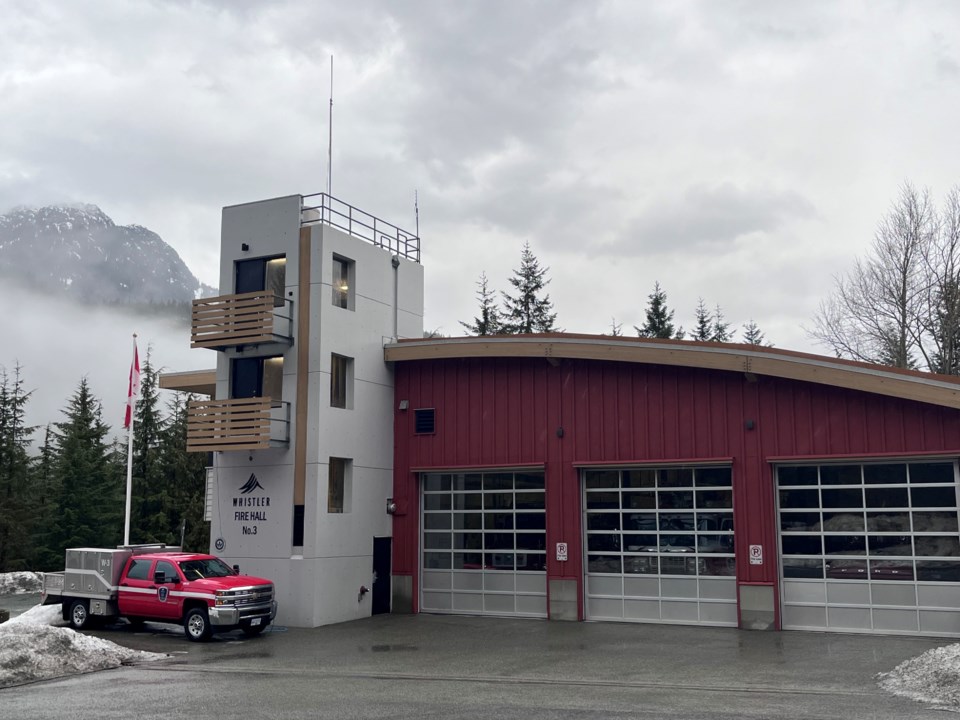Many Whistlerites have had to tighten the purse strings as costs have risen on various fronts, and the Resort Municipality of Whistler (RMOW) is no exception.
With a growing population, aging infrastructure, and several major upcoming costs in the pipeline, Whistler “may be facing a period of correction when it comes to taxes,” said Carlee Price, the RMOW’s chief financial officer, at the Oct. 22 committee of the whole meeting.
Presenting the 2025 draft budget to mayor and council, RMOW staff painted a picture of austerity, with department heads looking to do more with fewer resources and, aside from those significant anticipated costs, aiming for zero-growth budgets of their own.
That will likely mean hiked rates across the board for the average taxpayer. The RMOW floated a 9.5-per-cent property tax increase*, and a utilities parcel tax and user fee increase between four and eight per cent, depending on the fund. Staff broke that down into approximate dollar amounts, with the average Whistler Housing Authority unit, assessed at $500,000 in 2024, facing a potential $760 property tax bill in 2025, a $70 increase. The average condo, assessed at $1 million, would face a $1,510 tax bill, a $130 increase. A single-family home, assessed at $4 million, would face an estimated $6,040 tax bill, a $520 hike. And a commercial property, assessed at $500,000, would face a $3,590 tax bill, a $310 rise.
Looking at utility taxes and fees, between water, sewer and solid waste, the total charge for 2025 is anticipated to be $1,440, up $80 from last year.
Part of the current pressure on Whistler’s mill rate is the fact that, despite the community growing over the past decade at a steady clip—roughly four per cent annually in permanent residents, and between two and three per cent when factoring in tourists and temporary residents—the number of properties has remained stagnant, with an average growth rate of just 0.2 per cent over that period.
“What happens if the population grows and a much smaller number of new properties is added?” asked Price. “Each individual property is now responsible to fund services and amenities being delivered to a greater number of people than was once the case. This costs money, and specifically more money from each individual property owner. This is where Whistler finds itself today.”
‘Big rocks’
With Whistler’s rising population comes certain growing pains.
Staff told elected officials about several “big rocks” RMOW budgeters will have to deal with—so-called because “you need to fit them in the jar before anything else will fit in and around them,” explained municipal CAO Ginny Cullen.
Chief among them is the higher proportion of policing costs the RMOW will have to absorb after Whistler’s population cracks 15,000, an inevitability in the next census, in 2026, given the resort’s population fell just shy of 14,000 in 2021.
“We need to start planning in our budget for that increase now, so that’s what this budget shows today,” Cullen said.
As it stands today, the RMOW pays 70 per cent of the local RCMP’s roughly $5.4-million annual policing costs, rising to approximately $5.9 million in 2025. In April 2027, after Whistler hits 15,000 residents, that proportion increases to 90 per cent.
Another big rock in Whistler’s way is the anticipated cost of fighting fire in the resort. In January, council made the decision to staff the No. 3 Fire Hall in Spring Creek full-time. That’s a significant chunk of the $1,336,300 increase in predicted costs for fire in 2025. Staff explained expenditures will help fund increased fire risk mitigation and improving Whistler’s wildfire defence posture.
The third major cost staff pointed to in its draft budget was for public transit. The entire cost of transit contract services for 2025 is a whopping $8,841,253, up more than $1.5 million from last year because of increased transit service. That sticker shock is lessened, however, by a jump in transit revenues. Offset by that rise, next year’s anticipated increase in transit costs is $286,200.
Although not lumped in with the other “big rocks,” the highest year-over-year increase in the 2025 budget, by far, is for the municipality’s payroll and benefits, up $2,701,200 from last year, more than triple the next largest increase, for policing costs. The RMOW explained approximately 45 per cent of this amount is for standard wage increases, determined through collective bargaining and benchmarked against six comparable municipalities.
“This is important as it ensures our municipal employees are being compensated fairly compared with other municipalities and ensures we retain and continue to recruit a skilled workforce,” a statement from the RMOW read.
Roughly a quarter of the payroll increase was adjusted for the decrease in the number and duration of vacant roles, while 15 per cent reflects an increase to Whistler Fire Rescue staffing, and 10 per cent for step increases as per the RMOW Staff Handbook. The remaining five per cent covers an increase in Building Department staffing.
On Nov. 19, the RMOW will bring its draft projects budget to council, before it presents its 2025 budget guidelines in December. Council will consider the five-year financial plan bylaw in January.
*Clarification: An earlier version of this story indicated the RMOW had proposed a property tax increase of 9.5% "over the next five years," reflecting a municipality's five-year financial plan. It does, in fact, reflect the proposed hike for 2025.






